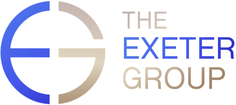Securing qualitative data to understand the experiences of patients is incredibly valuable to every healthcare organization. Data can provide fascinating and actionable insights into improving care. At Exeter, we always conduct focus groups by demographic subgroup so that we can understand how different dimensions of diversity impact the patient experience. This includes race, gender, age, veteran status, tenure, and more. We are particularly passionate about ensuring that patients with disabilities are included.
A critical component of ensuring that qualitative data from focus groups is useful and reliable is an adequate sample size. As such, participant sign-ups and turnout are key to the success of data collection. Transportation, accessibility, and communication can all present obstacles that can make it tough for patients with disabilities to participate. Finding ways to overcome these obstacles is critical to ensuring the sample size for focus groups is acceptable. Unfortunately, there isn’t a lot of information out there on how to effectively conduct focus groups with patients with disabilities.
What is the best way to include traditionally hard to reach populations and ensure their participation? In Exeter’s experience, you must first make them aware of the opportunity. Then you must make it possible for them to attend and participate. And, finally, you must help them feel comfortable and incentivized enough to attend and participate. This is the first in a 3-part series of best practices for conducting focus groups with patients with disabilities. Let’s begin with awareness of the opportunity.
AWARENESS
There are many ways to make patients with disabilities aware of the opportunity to provide focus group feedback. Some are more passive than others.
SUPPORT GROUPS AND CLASSES
Send representatives to support groups and classes hosted by your organization, or hosted in the community, that patients with disabilities might attend. There are support groups and classes for patients with Parkinson’s, Cancer, Stroke and Aphasia, Alzheimer’s, Spinal Cord Injuries, MS, ALS, and more. Reach out to support groups for companions or caretakers as well who may wish to attend, or encourage their loved ones with disabilities to attend your focus groups. There are support groups for companions of patients with Dementia, Cancer, etc. There are community wellness classes, continuing care classes for patients with disabilities, and more. Ask to attend these groups and classes and to speak briefly at the beginning. Bring flyers to share and spend a few minutes describing the purpose of the groups and answering questions.
FLYERS AND SIGNAGE
Think about each stage of the patient experience when they visit your organization. Place flyers at registration desks, parking validation desks, security desks, and anywhere else a patient might stop during their visit. Add slides to video boards in the waiting rooms and hallways and anywhere else your organization makes announcements to patients.
Do not overlook the importance and convenience of email. You may have moderate turnout without it, but you’ll have significantly better results by finding ways to contact patients via email. Contact support groups and ask them to email their members or include a link in an upcoming newsletter to subscribers.
EMPLOYEES AND VOLUNTEERS
Make sure your employees and volunteers have the information they need to share the opportunity with the patients with disabilities they encounter. Contact team managers and ask them to encourage their team members to talk to patients with disabilities about the focus groups. Add information about the focus groups to your intranet and email employees with information they can share with their patients.
SIGNING UP
Offer multiple ways for patients to sign up. Create an online sign-up page as well as an email and phone number for patients to use to sign up. The goal is to make it convenient for patients to commit to attending. Convenience is different for everyone so consider how individuals with disabilities might engage with the sign-up process. A person with a visual disability might prefer to call. A person with a physical disability might prefer to dictate an email instead of navigating a sign-up page.
There are a number of important considerations and best practices for the sign-up process:
- Indicate that participants should only sign up for one group.
- Clearly explain who should participate in each group. Provide examples of the types of disabilities that fall under each category. For example, “Sensory Disabilities” may be defined differently by different people. Indicate whether you are looking for patients with hearing and visual disabilities or patients with disabilities related to pain or processing. Additionally, not everyone with a disability identifies as having a disability or knows that certain diagnoses can be considered disabilities. For example, do you want to hear from patients who have cancer or diabetes? Not everyone knows that these diagnoses are sometimes considered disabilities.
- Provide time, date, and location information during sign-up. Patients with disabilities may want to know the exact location to determine if it is accessible for them.
- Be sure to indicate that accommodations will be made available.
A very important consideration is sending communication about the focus groups well in advance of the first group. Contact potential participants several weeks in advance before their calendars fill up to ensure they have enough time to attend and to arrange transportation or childcare. Allow enough time for word to spread through employees, volunteers, support groups, and classes.
With proper planning and communication strategies, you can reach many people who have disabilities to make them aware of the opportunity to share their perspectives. Once you’ve made them aware, you’ll need to make it possible for them to attend. We’ll discuss how to do so in Part Two of this series.
_______________
Lauren Jones is a Project Manager specializing in organizational development solutions for healthcare organizations. She is passionate about helping healthcare organizations develop their teams and leaders to better serve their communities and reduce health disparities.

